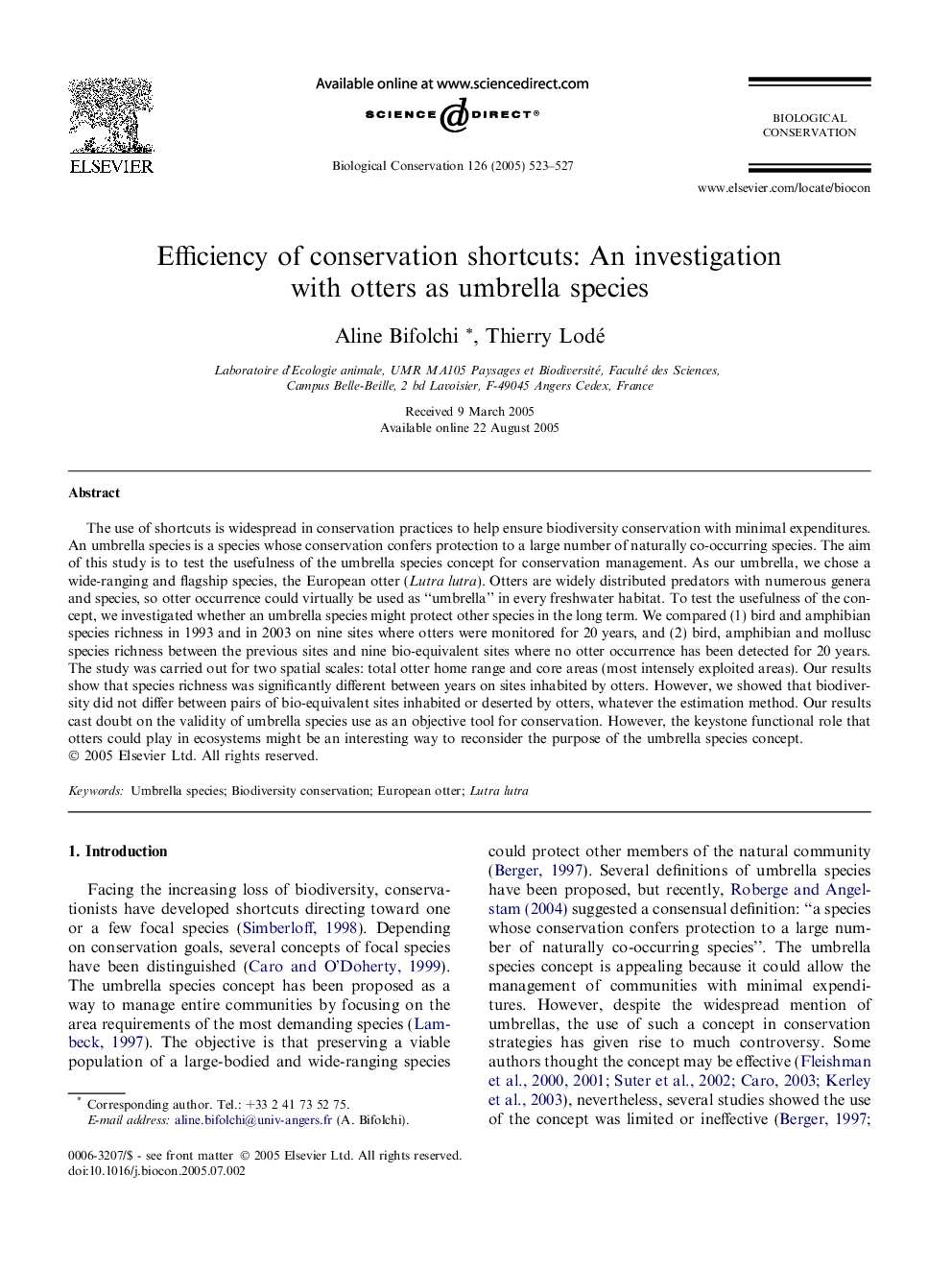| Article ID | Journal | Published Year | Pages | File Type |
|---|---|---|---|---|
| 9445955 | Biological Conservation | 2005 | 5 Pages |
Abstract
The use of shortcuts is widespread in conservation practices to help ensure biodiversity conservation with minimal expenditures. An umbrella species is a species whose conservation confers protection to a large number of naturally co-occurring species. The aim of this study is to test the usefulness of the umbrella species concept for conservation management. As our umbrella, we chose a wide-ranging and flagship species, the European otter (Lutra lutra). Otters are widely distributed predators with numerous genera and species, so otter occurrence could virtually be used as “umbrella” in every freshwater habitat. To test the usefulness of the concept, we investigated whether an umbrella species might protect other species in the long term. We compared (1) bird and amphibian species richness in 1993 and in 2003 on nine sites where otters were monitored for 20 years, and (2) bird, amphibian and mollusc species richness between the previous sites and nine bio-equivalent sites where no otter occurrence has been detected for 20 years. The study was carried out for two spatial scales: total otter home range and core areas (most intensely exploited areas). Our results show that species richness was significantly different between years on sites inhabited by otters. However, we showed that biodiversity did not differ between pairs of bio-equivalent sites inhabited or deserted by otters, whatever the estimation method. Our results cast doubt on the validity of umbrella species use as an objective tool for conservation. However, the keystone functional role that otters could play in ecosystems might be an interesting way to reconsider the purpose of the umbrella species concept.
Related Topics
Life Sciences
Agricultural and Biological Sciences
Ecology, Evolution, Behavior and Systematics
Authors
Aline Bifolchi, Thierry Lodé,
